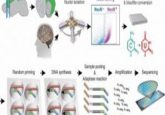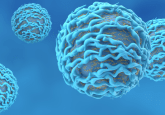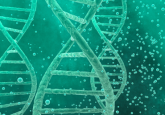Childhood trauma and its multigenerational impact on the brain

 Leland Fleming (left) is a postdoctoral Research Fellow in the lab of Kerry Ressler at Harvard Medical School and McLean Hospital (both MA, USA). Fleming investigates the long-term impacts of childhood trauma on the brain and overall aging.
Leland Fleming (left) is a postdoctoral Research Fellow in the lab of Kerry Ressler at Harvard Medical School and McLean Hospital (both MA, USA). Fleming investigates the long-term impacts of childhood trauma on the brain and overall aging.
Digital Editor Annie Coulson spoke with Fleming at the Society for Neuroscience’s annual meeting, Neuroscience 2023 (Washington, DC, USA, 11–15 November) about how an individual’s childhood trauma affects them in adulthood. He is also interested in researching whether trauma can be transmitted to the next generation, either biologically or through behaviors, such as parenting behaviors.
How does childhood trauma affect the adult brain?
We saw that when an individual experiences trauma during childhood, it affects the structure of the brain. For example, if we look at regions in the visual cortex, we can see that the size or the cortical thickness of those regions is decreased in adulthood if that person has experienced childhood trauma. This seems to be especially true in cases where the trauma involved a strong visual component, such as witnessing domestic violence. We also see an association between having experienced childhood trauma and the pace of biological aging later in a person’s life.
To measure biological aging, we often use a method called DNA methylation, which essentially looks at markers on a person’s DNA or genetic material that seem to associate with age. When we looked at the association between trauma and those markers, we found that the mothers in our study aged slower if they themselves experienced childhood trauma, which seemed counterintuitive. However, looking at some of the other literature revealed that there may be some potential confounds due to pregnancy; the body – and especially DNA methylation – has been shown to change greatly around the perinatal period.
Interestingly, even though we didn’t see the direction that we were expecting in the DNA methylation analysis, we did see that the pace of aging as measured by DNA methylation for the mothers matched that of their infants when the infants were approximately 15 months of age. However, examining the direct effects of pregnancy and early development, independent of childhood maltreatment remains an ongoing part of our work.
With regards to how the brain structure is affected, we have found that there are some regions in the occipital cortex that reduce in size in individuals who experience maltreatment or childhood trauma. We also looked at brain age, which uses a cumulative measurement of structure across the entire brain. Interestingly, we found that experiencing more childhood trauma seems to coincide with having a faster pace of brain aging in adulthood.
Even though there are some potential confounds due to pregnancy, there appears to be at least some kind of common driver of aging, as shown by DNA methylation, for both the mothers and the infants. By analyzing DNA methylation markers and brain structure, we can see that the impact of childhood trauma is indeed traceable into adulthood. We see it mainly in brain structure, but then we also see some similarity in terms of DNA methylation between the mothers and their infants, indicating that there may be some aspect that’s shared between the two, either biologically or in terms of shared environmental risk.
What techniques did you use in this project?
For this project, we used a combination of MRI and DNA methylation. We took T1-weighted structural MRI images of the participants to investigate brain structure. We also collected saliva samples and extracted their DNA to perform DNA methylation analysis on those samples.
What challenges did you face in this project?
One challenge – and I think most researchers have this challenge – is that you never have a big enough sample size. Trying to recruit mothers and infants is very difficult because we need them to come back for multiple time points. There is also the sensitive nature of this sort of study, which requires participants who have experienced trauma. Additionally, further exploration of the interesting association between pregnancy and DNA methylation and how that may be influencing the results is something that we don’t quite understand just yet in our data. I think this is a challenge that – once we overcome it – will be very informative.
Why is this research so important?
One reason why this research is beneficial is because it shows that the multigenerational approach to solving the impacts of childhood trauma is important. A lot of times, we think of these things as just affecting one generation. When in reality, these experiences can have an effect on both the person who has experienced them as children as well as the individual’s own children. I think this research highlights the importance of trying to use multigenerational approaches to end the effects of childhood trauma.
Where do you hope to take this research next?
The next step would be to conduct a longitudinal study where we follow infants and their mothers to a later time point and get more information about how these infants develop. I would also like to increase the sample size in the future and try looking at other measures that we can get from MRI. In addition to the structural MRI data that I talked about in this project, we also have some functional data, which would allow us to explore how the brain functions differently after having experienced childhood trauma.
The opinions expressed in this interview are those of the author and do not necessarily reflect the views of BioTechniques or Taylor & Francis Group.





